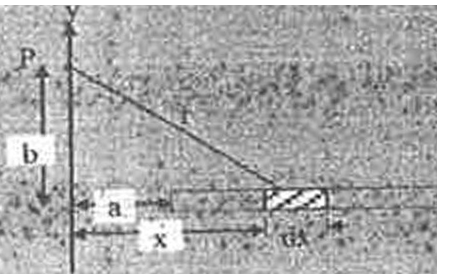A steel rod of length 20326 is cut out from a rod of length 5615. What then is the remaining length of the rod?
363130
367130
361130
3611130
To find the remaining length of the steel rod after cutting out a portion from it, we will follow these steps:
Step 1: Convert Mixed Numbers to Improper Fractions
First, we need to convert the mixed numbers into improper fractions for easier calculations.
1. Convert 5615:
\(
56 \frac{1}{5} = \frac{56 \times 5 + 1}{5} = \frac{280 + 1}{5} = \frac{281}{5}
\)
2. Convert 20326:
\(
20 \frac{3}{26} = \frac{20 \times 26 + 3}{26} = \frac{520 + 3}{26} = \frac{523}{26}
\)
Step 2: Find a Common Denominator
Next, we need to find a common denominator to subtract the two fractions. The denominators are 5 and 26. The least common multiple (LCM) of 5 and 26 is 130.
Step 3: Convert Fractions to the Common Denominator
Now we convert both improper fractions to have the common denominator of 130.
1. Convert 2815 to a denominator of 130:
\(
\frac{281}{5} = \frac{281 \times 26}{5 \times 26} = \frac{7306}{130}
\)
2. Convert 52326 to a denominator of 130:
\(
\frac{523}{26} = \frac{523 \times 5}{26 \times 5} = \frac{2615}{130}
\)
Step 4: Subtract the Two Fractions
Now that both fractions have the same denominator, we can subtract them:
\(
\frac{7306}{130} - \frac{2615}{130} = \frac{7306 - 2615}{130} = \frac{4691}{130}
\)
Step 5: Simplify the Result
The remaining length of the rod is:
\(
\frac{4691}{130}
\)
Final Answer
Thus, the remaining length of the rod after cutting is:
\(
\frac{4691}{130}
\)
First, we need to convert the mixed numbers into improper fractions for easier calculations.
\(
56 \frac{1}{5} = \frac{56 \times 5 + 1}{5} = \frac{280 + 1}{5} = \frac{281}{5}
\)
\(
20 \frac{3}{26} = \frac{20 \times 26 + 3}{26} = \frac{520 + 3}{26} = \frac{523}{26}
\)
Next, we need to find a common denominator to subtract the two fractions. The denominators are 5 and 26. The least common multiple (LCM) of 5 and 26 is 130.
Now we convert both improper fractions to have the common denominator of 130.
\(
\frac{281}{5} = \frac{281 \times 26}{5 \times 26} = \frac{7306}{130}
\)
\(
\frac{523}{26} = \frac{523 \times 5}{26 \times 5} = \frac{2615}{130}
\)
Now that both fractions have the same denominator, we can subtract them:
\frac{7306}{130} - \frac{2615}{130} = \frac{7306 - 2615}{130} = \frac{4691}{130}
\)
The remaining length of the rod is:
\frac{4691}{130}
\)
Thus, the remaining length of the rod after cutting is:
\frac{4691}{130}
\)
Similar Questions
Knowledge Check
- Question 1 - Select One
The length of a rod is (11.05±0.05)cm. What is the length of two such rods?
A(22.1±0.05)cmB(22.10±0.05)cmC(22.1±0.10)cmD(22.10±0.10)cm - Question 2 - Select One
A brass rod of length 50cm and diameter 3.0cm is joined to a steel rod of the same length and diameter. What is the change in length of the combined rod at 250∘C, if the original length are at 40.0∘C?
(Coefficient of linear expansion of brass =2.0×10−5/∘C,steel=1.2×10−5/∘CA0.27cmB0.34cmC0.21cmD0.18cm - Question 3 - Select One or More
A composite rod consists of a steel rod of length 25cm and area 2A and a copper rod of length 50cm and area A. The composite rod is subjected to an axial load F. If the Young's moduli of steel and copper are in the ratio 2:1 then
Athe extension produced in copper rod will be moreBthe extension in copper and steel parts will be in the ratio 1:2Cthe stress applied to copper rod will be moreDno extension will be produced in the steel rod
A brass rod length 50 cm and diamteer 3.0 mm is joined to a steel rod of the same length and diameter. What is the change in length of the combined rod at 250∘C if the original length are at 40∘C ? Coefficient of linear expansion of brass and steel are 2.10×10−5.∘C−1 and 1.2×10−5^(∘)C−1 respectively.
View SolutionAt 40∘C, a brass rod has a length 50 cm and a diameter 3.0 mm. it is joined to a steel rod of the same length and diameter at the same temperature. What is the change in the length of the composite rod when it is heated to 240∘C? The coefficient of liear expansion of brass and steel are 2.0×10−5.∘C−1 and 1.2×10−5.∘C−1 respectively:
View SolutionCalculate the potential due to a thin charged rod of length L at the points along and perpendicular to the length. Charge per unit length on the rod is λ.
 View Solution
View SolutionFind the thermal resistance of an aluminium rod of length 20cm and area of cross section 1cm2 . The heat current is along the length of the rod. Thermal conductivity of aluminium =200Wm−1K−1 .
View SolutionA composite bar of length L=L1+L2 is made up from a rod of material 1 and of length L1 attached to a rod of material 2 and of length L2 as shown. If α1 and α2 are their respective coefficient of linear expansion, then equivalent coefficient of linear expansion for the composite rod is
View Solution

